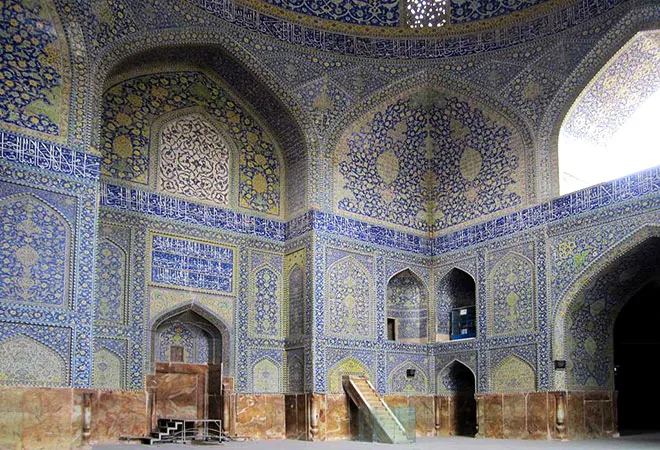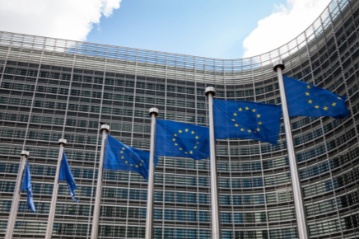The Indian government’s recent announcement that it intends to cut oil imports from Iran by a fifth, as a row over New Delhi’s investment commitments towards the Farzad B gas field surfaces once again, has highlighted the fractures in what is termed a civilisational relationship between the two countries.
In this latest clash of interests, New Delhi has reacted with a cut in imports after “bolder” negotiation tactics were applied by Tehran over the Farzad B gas field, which was discovered by India’s state-owned ONGC Videsh Ltd (OVL) and whose development was jointly agreed upon by the two states in 2003. This is not the first time a clash of interest has occurred between India and Iran over a major project, with both countries bringing some of the world’s most rigid and bureaucratic processes to the table, designing a setting where both act as their own worst enemies despite having resolute common interests, political and economic.
Iran is not an easy customer, and this has been proven time and again with India’s projects in the country. While the bilateral relationship has flourished at the political level, with frequent high-level exchanges, the latest being a visit undertaken last year by Prime Minister Narendra Modi himself, little has transpired in the form of actual agreements on the ground. Farzad B and the Chabahar port project — the latter viewed as a magnum opus for India’s strategic and economic posturing in the region but, in reality, just a mirage — can be seen as the flagship projects defining India-Iran ties. So, despite the diplomatic niceties, who is to blame for this long-running status quo?
Energy constitutes almost the entire spectrum of trade between India and Iran, with New Delhi being a net importer of oil and Tehran, a net exporter. It is, therefore, seen as a natural transactional relationship. India decided to move beyond oil, and invest in natural gas in Iran, which is home to the world’s second largest gas reserves. There is no doubt that OVL moved slowly to begin with and eventually hit the wall of international sanctions against Iran, which blocked any possibility of speeding up the process of financial agreements. However, the methods used by Tehran during the sanctions period to push New Delhi to act on its commitments — owing to the former’s immediate requirements for hard currency—were not opportune, and such displays of often crass diplomacy did not help.
Around 2010-11, Iran was feeling the full pinch of sanctions orchestrated by the West, backed by a global diplomatic push by the US to support its stance against Tehran’s nuclear programme. India succumbed to this pressure as well, voting against Iran and supporting the sanctions process at the UN in 2009. However, despite this, India pressurised the US to give it waivers to continue purchasing oil from Iran, which the Obama administration allowed for a certain period. However, this arrangement did not last long, forcing India to deposit Iranian payments in a bank account in Kolkata while it waited for sanctions to ease before being able to transfer the payments.
In 2012, Iran reportedly dispatched a team to Delhi to deliver something of an ultimatum over India’s non-delivery on the Farzad B project. Tehran asked India to immediately commit the $1 billion promised, or the field would be promised to “others”, an indirect reference to China, which is Iran’s biggest trading partner today and has funded railway and road projects in the country. The offer from Iran during this period to India was “exceptionally generous”, as per current Iranian ambassador to India, Gholamreza Ansari, in a recent interview. Ansari asked India to be more “assertive” about the project, an oxymoron coming from the Iranians; nonetheless, it is advice that is not to be dismissed entirely.
OVL has now announced that it intends to invest $3 billion in Farzad B. The company has reportedly submitted revised development plans for a five-year period and is awaiting feedback from Tehran. However, with sanctions lifted for the moment, India will have to put its political weight behind the project, as Iran now has better and more equipped options in the international markets to choose from. This, of course, despite continuous threats by the new American administration of President Donald Trump of nullifying the nuclear deal and reactivating sanctions, a move that could complicate any investments done in Iran today. This is the sort of opportunity Western oil and gas companies had been waiting for, and their representatives camped in the Iranian capital for much of the duration of the P5+1 (US, UK, France, Russia, China and Germany) negotiations to build influence. No Indian company maintained such a presence in Iran during this “silent rush”. And when, in 2014, President Hassan Rouhani held a special meeting for global oil and gas companies on the sidelines of the World Economic Forum in Davos, Switzerland, attended by industry giants such as ENI, BP, Shell, Total, ExxonMobil, etc., no Indian company was present.
India has, over the past few months, ironed out many of the problems with Iran, such as clearance of payments. With India importing more oil from Iran, the latter has regained its lost mantle as one of the top three suppliers to the country. However, both Tehran and New Delhi need to recognize that the ners in the wheel for greater, target-oriented cooperation are their very own bureaucracies.
This commentary originally appeared in Live Mint.
The views expressed above belong to the author(s). ORF research and analyses now available on Telegram! Click here to access our curated content — blogs, longforms and interviews.




 PREV
PREV



